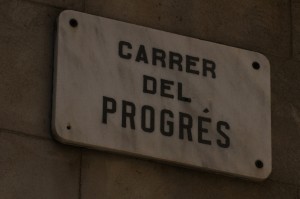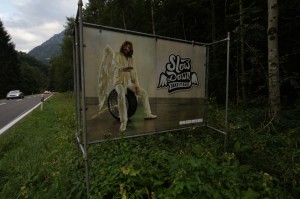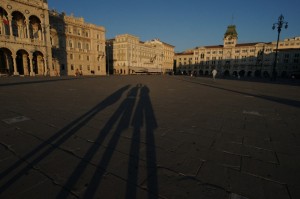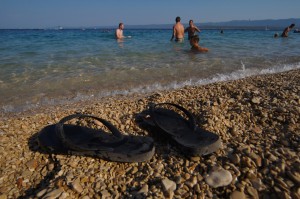Almost every year since the early eighteen hundreds, La Festa de Gràcia has been held in the old district of Gràcia in Barcelona.
This year is the 196th anniversary of the festival.
It starts on August 15, the Assumption Day public holiday, and runs for seven days.
It’s the height of summer in Barcelona, so it’s hot and the streets are full of tourists.
This year 18 streets and plazas will take part in the festival. Each one is decorated in a theme and prizes are given for various categories.
Not everyone in the streets help, in fact there is some resistance to the disruption caused by scaffolding, painting and the crowds of extra people flooding into the narrow streets.
Life has to go on, so the residents work around the mayhem by squeezing past the weird and wonderful creations that are now dominating their normally quiet environment .
Hayden has spent four years living in Gràcia, three of them in Carrer Progress, one of the participating streets.
This is the third year that he has been part of the dedicated group who make it all happen.
As we were in Barcelona, staying with Hayden, we volunteered to put in a few hours work on the last night before the festival opened.
When we arrived, at around midday, I wondered how it would all come together, there appeared to be more to do than had been done.
When we left at 8:30 that evening, it still seemed an insurmountable task to get everything completed for a 2pm start the next day.
Hayden, like a number of other volunteers, didn’t get to bed that night.
Carrer Progrés had chosen Star Wars as their theme and images from the George Lucas classic were everywhere.
Apart from Darth Vader there were Jawas, Chewbacca, Jabba the Hutt, C-3PO, Yoda, several Storm Troopers and the Mos Eisley Cantina band.
All were very popular backdrops for the hundreds of people who personalised their visit with a snap in front of their favorite character.














The highs and lows of Montenegro. (July 2012)
Friday, August 3rd, 2012Having spent the last few weeks near coastal resorts, during a heat wave, we decided to head for the cool of the mountains in Montenegro.
The rugged mountain ranges near Kolasin and Zabijak are dotted with glacial lakes that are set amidst world heritage national parks.
During the winter months, and they are long and cold in this part of the Balkans, these mountains towns are ski resorts.
Summer tourism is relatively new and the infrastructure is still under development.
Much of the accommodation is in apartments or 70s’ hotels that have seen better days. The meals are big but the beers are small (250mm) and warm.
However the scenery is spectacular and well worth the winding, bumpy mountain passes you have to take to get there.
We eventually did get down to the coast at Kotor, which was still in the grip of the heat wave.
Due to the lack of any real beaches, this medieval walled city isn’t as crowded as Budvar which is further south on the Montenegro Riviera.
The mountains are never far away and they loom large as an impressive backdrop to the town.
The harbour is almost in the centre and the cruise ship docked there appeared to be parked in the main street.
Dwarfed by the liner were the the usual array of sleek, tax evasion yachts, flying the flags of Nassau and the Cayman Islands.
The resorts are only now getting back to the tourist numbers they experienced before the Bosnian War (1992-1995).
As a result there is a big contrast in the service you receive, not only between the city and the country but also within the same establishment.
We were soon to discover the difference between waiting and serving.
On two nights we ate at the same restaurant in Kotor that was right on the water’s edge.
The first night we were served by an enthusiastic guy from Bosnia.
He was very attentive and continually checked on our progress and satisfaction level.
So much so that we engaged him in conversation and learnt a bit about him.
This gave us a richer cultural experience.
On the second night we were served by one of the locals from Kotor.
The service was prompt and efficient but there was no interaction.
He got a tip, just as the guy on the first night, but he didn’t earn it in the same way.
He served us our food but didn’t wait on our expectations.
Posted in Comment, Photography | No Comments »